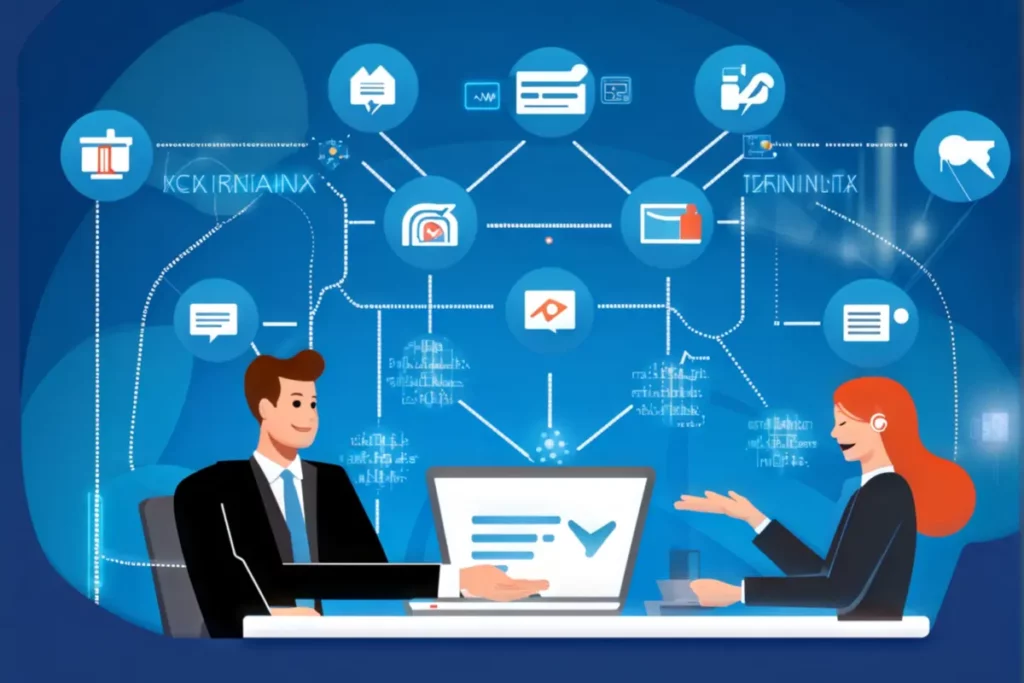Table of Contents
ToggleIntroduction
Defining ITIL Management Practices: ITIL (Information Technology Infrastructure Library) is a globally recognized framework for IT Service Management (ITSM). ITIL management practices are essential processes that guide organizations in delivering high-quality IT services to meet business goals. These practices are designed to enhance service delivery, align IT operations with business objectives, and continuously improve service quality.
Purpose of ITIL Management Practices: They are pivotal for organizations looking to improve efficiency, reliability, and adaptability in IT services. With Axelos and PeopleCert providing governance and certification for ITIL, these practices have been adopted by organizations worldwide to enhance their IT capabilities.
The Four Dimensions of Service Management in ITIL 4
Overview of the Four Dimensions: ITIL 4 introduced a holistic view of service management through the Four Dimensions model, covering:
- Organizations & People: Involves the human resources and structure required for IT service management.
- Information & Technology: Focuses on the data and technology used in delivering services.
- Partners & Suppliers: Addresses the relationships with other organizations that contribute to service delivery.
- Value Streams & Processes: The workflows and procedures that transform inputs into valuable outputs for customers.
- Connecting to ITIL Practices: Each dimension influences the management practices by ensuring they are aligned with organizational goals and capable of adapting to changes in the business environment.
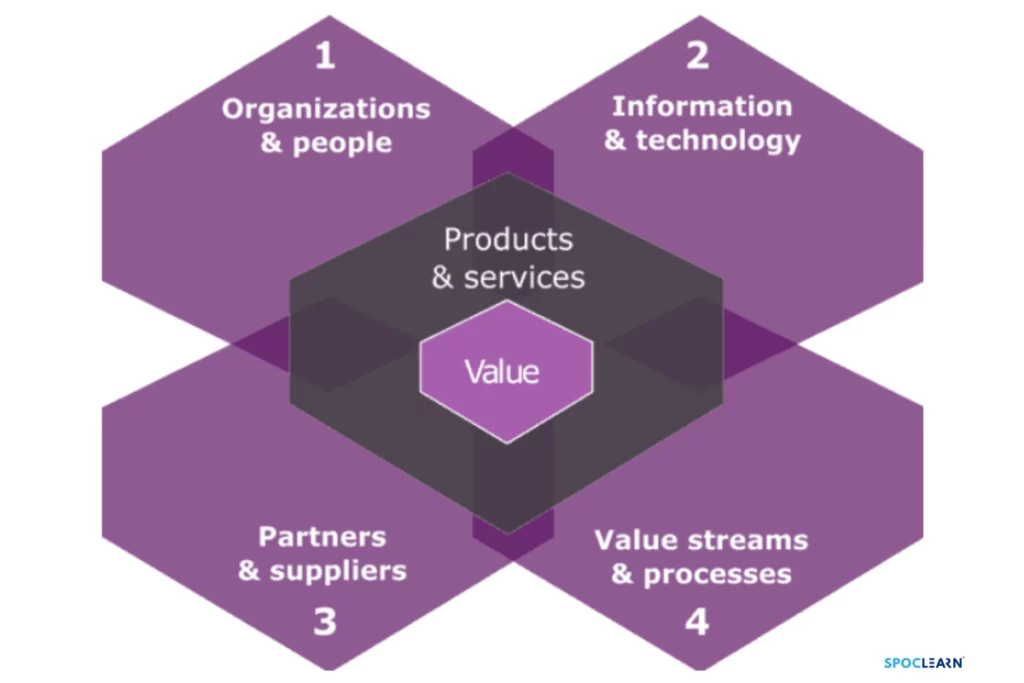
What Are ITIL Management Practices?
Definition: ITIL management practices encompass key guidelines, tasks, and processes that help organizations manage their IT services effectively. These practices serve as a blueprint for IT teams, providing them with the necessary tools and strategies to optimize service management.
Role in the Service Value System: In ITIL 4, management practices are a core component of the Service Value System (SVS), which defines how all the organization’s components and activities work together to enable value creation.
Types of ITIL Management Practices
ITIL 4 identifies 34 management practices categorized into three main types:
General Management Practices:
- Broad-based practices that support IT and non-IT operations. These include Continual Improvement, Risk Management, Information Security Management, and Knowledge Management.
- Continual Improvement: Encourages organizations to continually assess and enhance their services, processes, and practices.
Service Management Practices:
- Specific to IT services, covering the entire lifecycle. Examples include Incident Management, Problem Management, Service Desk, and Service Level Management.
- Incident Management: Focuses on restoring normal service operations as quickly as possible to minimize the impact on business operations.
Technical Management Practices:
- These are primarily focused on the technical aspects of service management, such as Deployment Management, Infrastructure and Platform Management, and Software Development and Management.
- Software Development and Management: Aligns software development activities with business needs, focusing on delivering functional software efficiently.
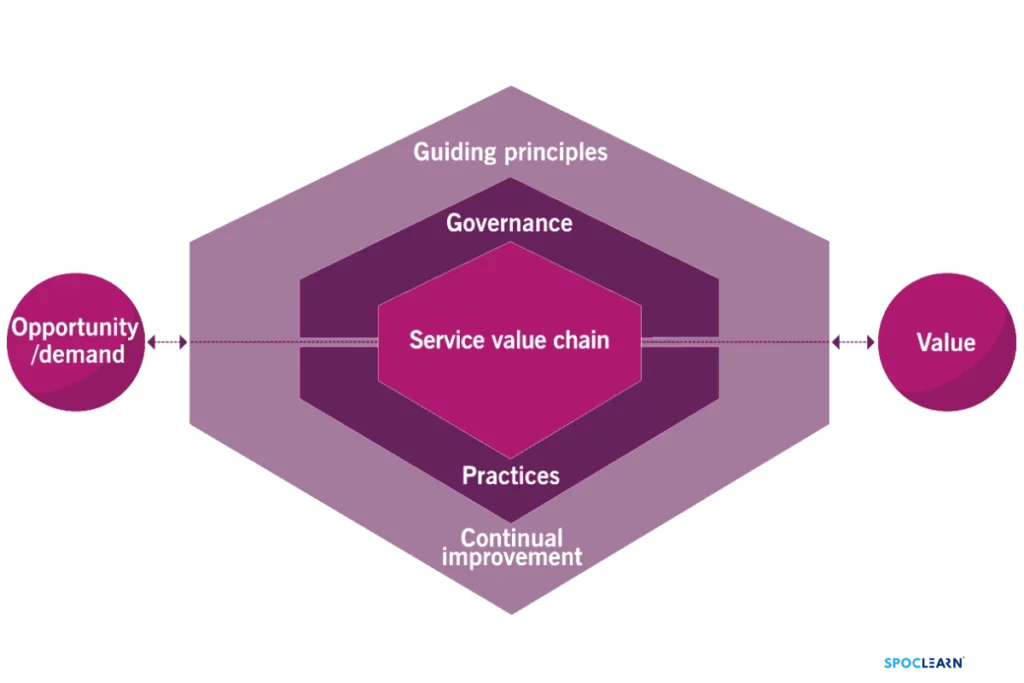
Detailed Breakdown of Key ITIL Management Practices
1. Incident Management
- Objective: Quickly restore service when disruptions occur to reduce the impact on the organization.
- Process: Incidents are logged, categorized, prioritized, and resolved by IT staff or escalated if necessary.
- Benefits: Improved service reliability, quicker response times, and reduced downtime.
2. Change Control
- Purpose: Ensures that changes to IT services are made in a controlled manner, reducing risks associated with service disruptions.
- Process: Requests for changes (RFCs) are evaluated, approved, implemented, and reviewed.
- Key Considerations: Balances agility with stability, allowing organizations to adapt while minimizing adverse effects on services.
3. Service Level Management
- Objective: Define and manage measurable Service Level Agreements (SLAs) between the service provider and customers.
- Process: Involves setting expectations, monitoring performance, and ensuring services meet agreed-upon standards.
- Value to Businesses: Enhances customer satisfaction by aligning IT services with business requirements.
4. Problem Management
- Purpose: Identifies and manages the root causes of incidents to prevent future occurrences.
- Steps: Involves problem detection, logging, diagnosis, resolution, and closure.
- Benefits: Reduces the recurrence of incidents, enhances stability, and improves service quality.
5. IT Asset Management
- Role: Manages an organization’s IT assets throughout its lifecycle to maximize value, reduce costs, and minimize risks.
- Activities: Asset tracking, lifecycle management, and compliance monitoring.
- Impact: Enables more informed decision-making regarding asset procurement, usage, and disposal.
6. Knowledge Management
- Objective: Ensure that useful information is accessible to those who need it to improve efficiency and effectiveness.
- Processes: Capturing, organizing, and sharing knowledge within the organization.
- Benefits: Encourages better decision-making, reduces training time, and minimizes service delays.
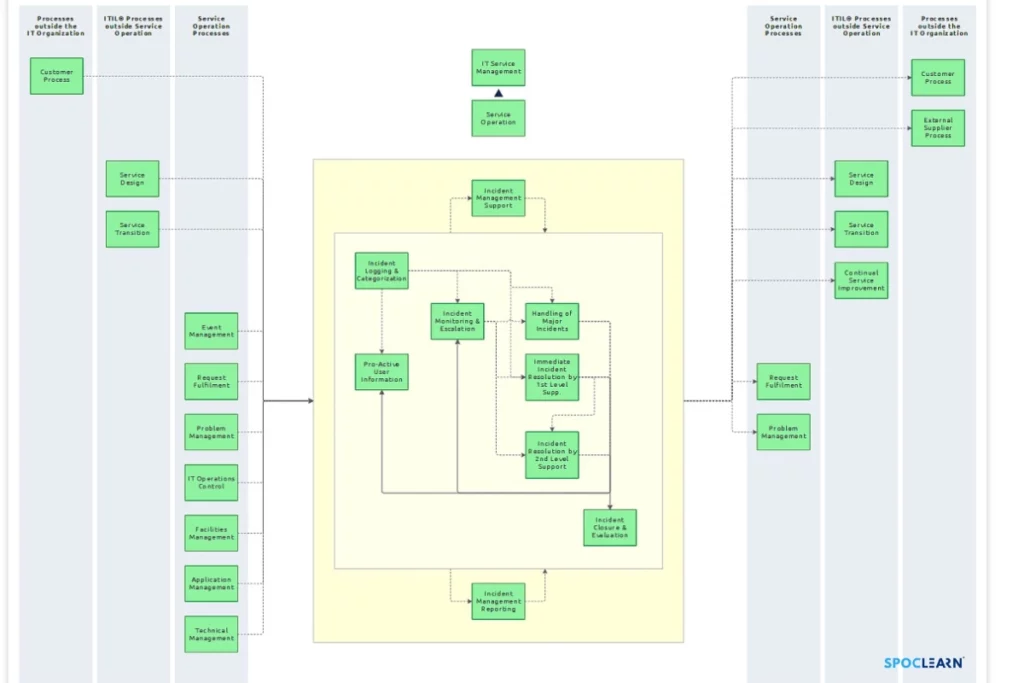
The Role of ITIL Management Practices in Business Transformation
- Supporting Digital Transformation: ITIL practices help organizations manage the complexities of digital transformation by streamlining processes and enabling more agile responses to change.
- Case Examples: Companies that adopted ITIL have reported improved service quality, better customer satisfaction, and more efficient use of resources.
Aligning ITIL Management Practices with Organizational Goals
- Customization of Practices: While ITIL provides a standardized approach, successful implementation often requires tailoring practices to fit specific organizational needs.
- Best Practices: Conduct regular assessments, align IT and business goals, and involve stakeholders across departments.
ITIL Training and Certification Programs
- Certification Pathway: PeopleCert, the official examination institute, offers ITIL 4 certification programs. IT professionals can progress through Foundation, Managing Professional, Strategic Leader, and Master levels.
- Why Get Certified?: ITIL certifications equip professionals with essential skills to implement ITIL practices effectively, improve their career prospects, and add value to their organizations.
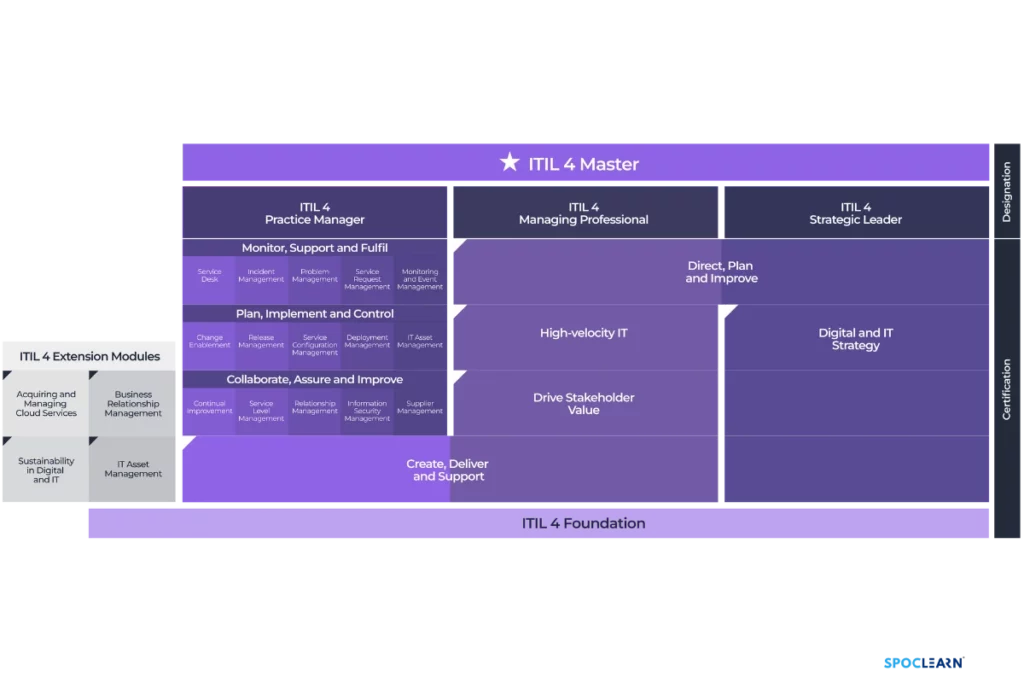
Conclusion
- Summary: ITIL management practices provide a framework that helps organizations manage IT services effectively and align them with business objectives. By implementing these practices, companies can improve service quality, enhance customer satisfaction, and reduce costs.
- Final Thoughts: Investing in ITIL training and certifications can help organizations stay competitive, adapt to industry changes, and achieve their strategic goals.
